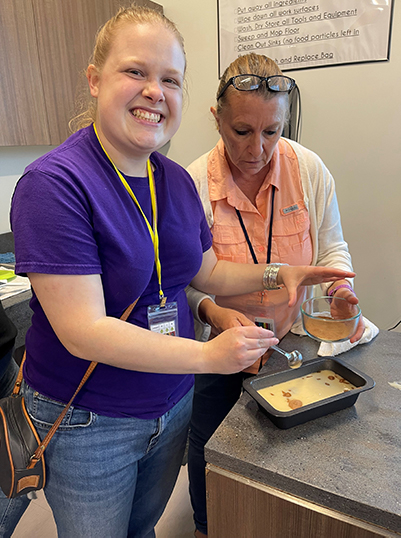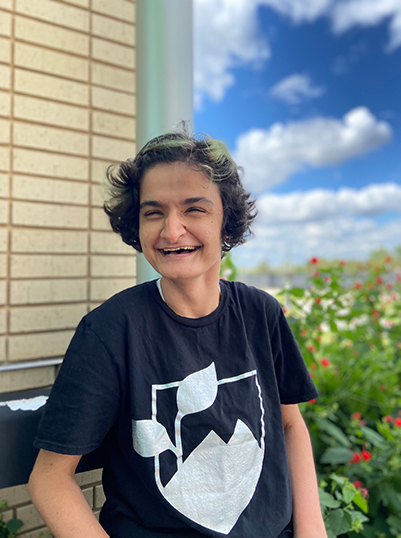By: Kelly Wanzer, MS, CCC-SLP, TSHA Member
For transition-aged students and young adults with disabilities, self-advocacy is often included in their work with clinicians, providers, educators, and case managers. Many times, however, learners have difficulty acquiring the skills needed to advocate for themselves in meaningful ways. Similarly, despite their best efforts, many professionals struggle to effect lasting change in this area. A review of recent literature illustrates some of the barriers faced by both educators and learners: lack of true opportunities to practice advocacy skills, few quality curricular options for adolescents and adults, prioritizing meeting graduation credit requirements over individualized development, failure to allow students to take risks, removal from general education and community environments, limited training on teaching self-advocacy, and poorly defined purviews for stakeholders.
 For all the barriers, research also offers direction on moving the needle forward toward educating and equipping students to live confident, self-determined lives. This includes intentional instruction and exploration of self-awareness, self-care, and self-advocacy skills. Through the funding of the Texas Higher Education Coordinating Board’s Innovative Autism Spectrum Disorder (ASD) Treatment Models grant, a transdisciplinary team between Texas Woman’s University School of Occupational Therapy, speech-language pathologists and behavior specialists from My Possibilities in Plano, Texas, and adults with intellectual and developmental disabilities have developed a thorough, detailed curriculum to address these concepts.
For all the barriers, research also offers direction on moving the needle forward toward educating and equipping students to live confident, self-determined lives. This includes intentional instruction and exploration of self-awareness, self-care, and self-advocacy skills. Through the funding of the Texas Higher Education Coordinating Board’s Innovative Autism Spectrum Disorder (ASD) Treatment Models grant, a transdisciplinary team between Texas Woman’s University School of Occupational Therapy, speech-language pathologists and behavior specialists from My Possibilities in Plano, Texas, and adults with intellectual and developmental disabilities have developed a thorough, detailed curriculum to address these concepts.
Promoting Community Participation for Autistic Learners aims to complement current transition planning curriculum for autistic learners as well as students who have similar sensory, communication, and social characteristics. By connecting concepts supported by research with hands-on, engaging lessons, both personal insight and community participation outcomes improve. Learning objectives include strengthening self-awareness skills as pertaining to the way students perceive and interpret sensory information, expanding the learner’s ability to recognize and meet their individual sensory needs, and increasing the capacity for students to make informed decisions about how and what they want to communicate about themselves to others. While this curriculum is not intended to diagnose or formally evaluate learners, it is designed to support common and individualized goals for students and contains observational assessment tools to capture information about students’ sensory needs, accommodation preferences, and social-communication competencies.
Throughout the development phases of this curriculum, the contributions of young adults with intellectual and/or developmental disabilities were crucial. Their observations shaped and, in some instances, rerouted the direction of the project. Adjustments were made to lessons, structure, format, and content based on the feedback of the individuals trialing the curriculum. Additionally, their comments and experiences highlight clinically significant themes for speech-language pathologists working with autistic people.
 Expressing opinions can be difficult. This feedback came through perhaps the loudest and clearest for the curriculum team. While not wholly surprising given the expressive language challenges often present in autism, the initial discomfort with expressing opinions for some learners was notable. Questions as seemingly basic as, “Do you like that?,” were often met with no response, even for learners who are able to answer concrete or fact-based questions with ease. Some people mentioned needing to know the “right answer,” and others declined participation in discussions regarding opinions altogether. For clinicians, this discomfort with expressing opinions is noteworthy. Voicing one’s thoughts is a critical social communication skill, and a student who is unable to recognize and express their preferences or needs is also unable to advocate for those preferences or needs with others. Speech-language pathologists must assess and treat formulation and expression of opinions with their clients just as they assess and treat taking turns in conversation, answering wh- questions about a text, or conversing on a topic.
Expressing opinions can be difficult. This feedback came through perhaps the loudest and clearest for the curriculum team. While not wholly surprising given the expressive language challenges often present in autism, the initial discomfort with expressing opinions for some learners was notable. Questions as seemingly basic as, “Do you like that?,” were often met with no response, even for learners who are able to answer concrete or fact-based questions with ease. Some people mentioned needing to know the “right answer,” and others declined participation in discussions regarding opinions altogether. For clinicians, this discomfort with expressing opinions is noteworthy. Voicing one’s thoughts is a critical social communication skill, and a student who is unable to recognize and express their preferences or needs is also unable to advocate for those preferences or needs with others. Speech-language pathologists must assess and treat formulation and expression of opinions with their clients just as they assess and treat taking turns in conversation, answering wh- questions about a text, or conversing on a topic.
With reflection comes reaction. To develop insight about oneself, a person must first have an experience, reflect on that experience, and then work to understand what happened during that experience. This can be an uncomfortable process for anyone; however, for a person with an intellectual or developmental disability, this process can be especially intense and emotional. Some of the individuals working through the curriculum development process with the curriculum team became upset when reflecting on previous experiences. One individual asked, “Why am I like this?,” regarding his innate sense to run away from situations that are overwhelming for him. Another broke down in tears and asked for help understanding herself and her relationships with peers. These types of comments and feelings are to be expected when discussing situations that are tied to big emotions. Speech-language pathologists are equipped to handle complex and negative feelings and often spur progress by making space for discussion around difficult topics. These are not situations to avoid with clients and students because they invoke strong emotion. Learners gain the ability to process emotions—not just label them—by experiencing them in relationship with others. Avoidance of heavy subjects or nuanced emotion can invalidate the emotional world of a client and inadvertently discourage self-expression and self-advocacy.
The treatment plans and goals targeted in speech therapy can change the trajectory of a student’s life drastically. For learners of all types, treatment centered on developing self-awareness, self-care, and self-advocacy skills is imperative. Clinicians have a say in many of their clients’ defining academic and transition-related moments. In those situations, speech-language pathologists continuously must ensure there is a seat at the table for students while also equipping learners to occupy their seat and advocate for their wants and needs to the extent they are able.
To learn more, visit https://planningforautism.com, and watch for updates.
References
Paradiz, V., Kelso, S., Nelson, A., Earl, A. (2018). Essential Self-Advocacy and Transition. Pediatrics April 2018; 141 (Supplement_4): S373–S377. https://doi.org/10.1542/peds.2016-4300P
Ryan, T. G., & Griffiths, S. (2015). Self-advocacy and its impacts for adults with developmental disabilities. Australian Journal of Adult Learning, 55(1), 31-53.